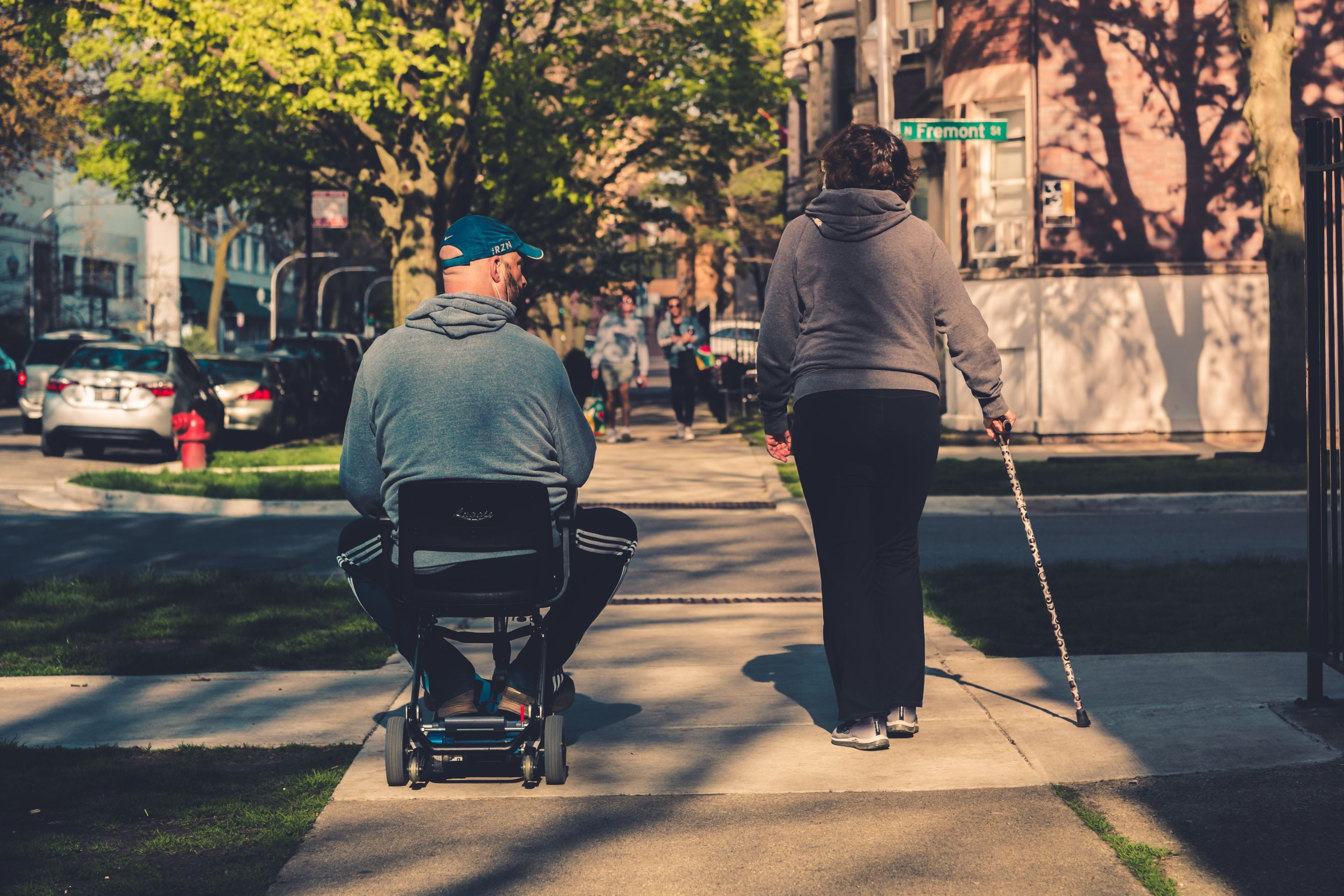More than 33 years after the passage of the Americans with Disabilities Act, cities are finally about to get some clear guidance on how to implement the landmark law’s principles — and possibly, lose one of their best excuses for not making public space fully accessible to people with mobility challenges.
In early August, officials at the U.S. Access Board quietly published the Public Right of Way Access Guidelines Final Rule to the federal register, taking a critical step towards solidifying the nation’s first-ever set of federal accessibility design guidelines that are specific to the transportation realm. And if the departments of Justice and Transportation adopt the sprawling 235-page guidebook, it could become a set of formal standards that carry the force of law, giving advocates more tools hold governments accountable for not providing basic infrastructure like wheelchair ramps on sidewalks or accessible push buttons at crosswalks.
“[If the Public Right of Way Access Guidelines were enforceable], a city couldn’t say, ‘Well, we don’t know how to do that’ — because there are actually guidelines,” explained Juliet Shoultz, transportation systems engineer for the Board. “[But even now], the guidelines give you a how-to, a best practice, even when they’re not a final rule yet, enforceable under the ADA. … You can’t really claim ignorance on how to make things accessible.”
If that sounds a little wonky and confusing, it is. But so is everything about American cities’ responsibilities to make their streets accessible. Since the ADA was passed in 1990, disability advocates have struggled to translate its broad mandate to “prohibit discrimination against people with disabilities” into specific, rules about the slopes of sidewalks and the color of stair risers at subway stations, even as federal regulators have passed standards for how to build, say, accessible private buildings.
It wasn’t until 2002 that the Access Board was even able to draft an initial set of accessibility guidelines for the public right of way, and it took until 2013 for a more complete proposed draft to be released to the public featuring important new notes on shared-used paths. Then the Trump administration and its infamous war on regulations rolled around, and progress on the Public Right of Way Access Guidelines, which advocates shorthand as PROWAG, got punted again.
In all that time, the guidelines existed in a kind of limbo, serving as a key touchstone for some transportation planners, while being functionally ignored by others. Meanwhile, fully adopted street design guidelines like the Manual of Uniform Traffic Control Devices offered some guidance on street accessibility issues — but it also left many problems “subject to engineering judgment,” which often chooses to privilege fast cars over safe people.
“When I worked on my first ADA plans in 2004 and 2005, we purposely catalogued our system and redid our engineering standards to fit draft PROWAG [guidelines], because we knew they would eventually become the law,” added Don Kostelec, a transportation consultant who specializes in ADA compliance. “But we didn’t know it would take 20 years. I don’t know why that can has been kicked down the road for so long. … I know there were disagreements over things like truncated domes, and frankly, when I read through the public comments [on the most recent PROWAG draft], a lot of people were kind of kicking and screaming and didn’t want some of these things to become laws.”
‘It’s definitely going to be a process’
Kostelec acknowledged that complying with the guidelines won’t be easy or cheap — though the Office of Management and Budget has already concluded that America can collectively afford it. He cited work he’s done in Utah, which he said has historically leaned hard on wording in the MUTCD that leaves engineers leeway to shorten the time allotted to pedestrians to simply cross the street — and made their “Walk” signals too short for just about everyone in the process.
“If you go to Utah today, pedestrians without disabilities barely have time to cross streets,” he said. “I’ve seen pedestrian crash reports where witnesses said they just didn’t make it across in time. States that have such widespread misuse of the intentions of the MUTCD … are going to really find [PROWAG] challenging.”
Under the PROWAG guidelines, by contrast, agencies would be given an unambiguous formula to set their minimum signal timing based on the width of the road and a research-backed, comfortable walking or rolling speed of 3.5 feet per second, plus a seven-second “walk” interval. Clear guidance like that won’t solve every ADA fail on U.S. streets, but Shoultz hopes that it will at least get the ball rolling in cities that were hesitant to move forward with their transition plans until PROWAG guidelines had solidified more.
“That’s not to say that it’s going to be economical or easy for every [government] to immediately go out there and put curb ramps everywhere that they’re missing and accessible pedestrian signals everywhere they have traffic lights,” she said. “It’s definitely going to be a process.”
Now, federal agencies will have a chance to add to the requirements set out in PROWAG before making the final-final decision on whether they’ll become the law of the land — and if they do make additions, another round of public comments on those changes will begin.
Still, Kostelec stressed that there’s nothing stopping municipalities from adhering to PROWAG right now — and the latest chapter in this multi-decade saga should only empower them to do the right thing and redesign streets today.
“If your city is updating zoning codes and street design standards, you should ask them to comply with the draft of PROWAG,” he said. “If a project is under design today, and it’s designed to meet what’s in the draft PROWAG, that means it won’t become a burden to future taxpayers who have to go back at some point in the future to rebuild it.”






